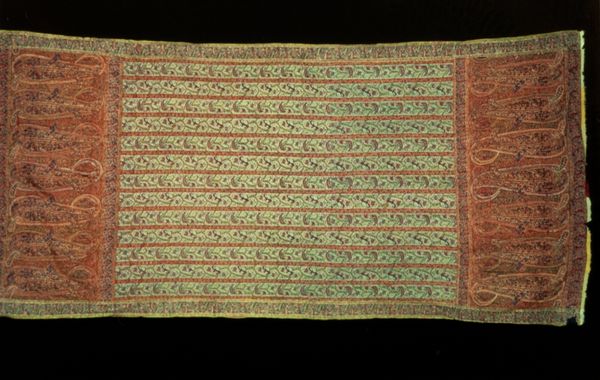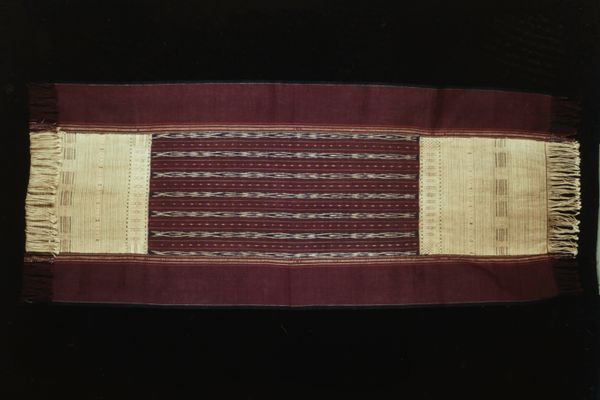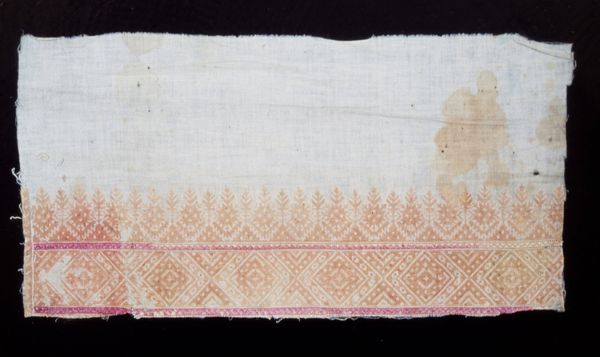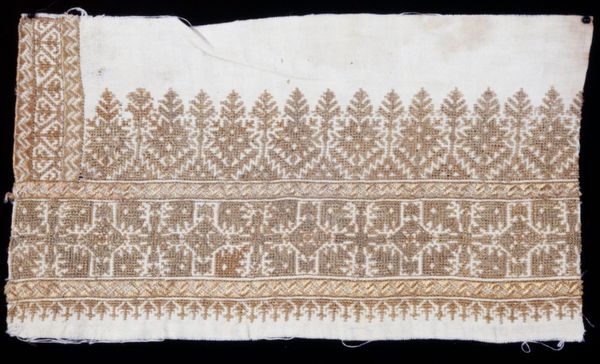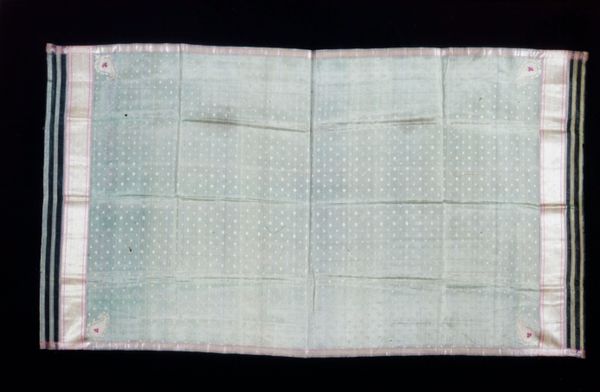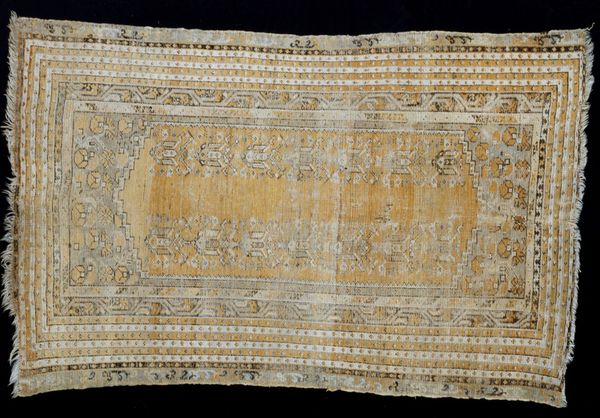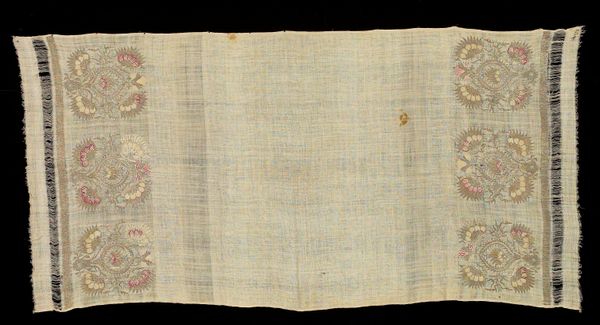
silk, weaving, textile
#
muted colour palette
#
silk
#
weaving
#
textile
#
islamic-art
#
decorative-art
Copyright: Public Domain
Curator: This object is a 19th-century doshalla, or shawl, a type of textile known for its intricate design and high-quality silk. Editor: Immediately, I notice the color palette is subdued yet sophisticated. There’s an elegance in the restraint; the patterns are dense but not overwhelming. Curator: Indeed. The production of these shawls in places like Kashmir involved specialized workshops, highlighting the skilled labor behind each piece. The weaving techniques were incredibly complex. Editor: Looking closer, the repeated paisley motifs point to broader dialogues around cultural exchange. Shawls like these were often exported to the West, becoming highly fashionable. This speaks to colonial power dynamics and appropriation. Curator: The material itself—silk—was a precious commodity, wasn't it? It would have traveled along trade routes to be transformed in the hands of the weavers into items signifying status. Each shawl represents the investment of resources, time, and knowledge. Editor: Exactly, and its consumption back in Europe had consequences—it fueled exploitative systems of production. Examining the doshalla necessitates acknowledging those intersectional stories of gender, class, and labor tied into global trade networks. Who was wearing these? Who was excluded? Curator: I wonder too about the weavers themselves, though. How did they see their role? Were they artisans or simply laborers? The detailed patterning suggests creativity alongside skill. Editor: That's it—acknowledging the individuality within systems. These textiles operate both as art objects and indicators of hierarchical social structures that impacted the artists, wearers, and communities involved. Curator: By exploring the production and consumption, the journey of this seemingly simple object opens our eyes to intricate historical processes of making and trade. Editor: Precisely. Considering its context prompts more reflective consideration regarding ethical production, equitable representation, and access.
Comments
No comments
Be the first to comment and join the conversation on the ultimate creative platform.
